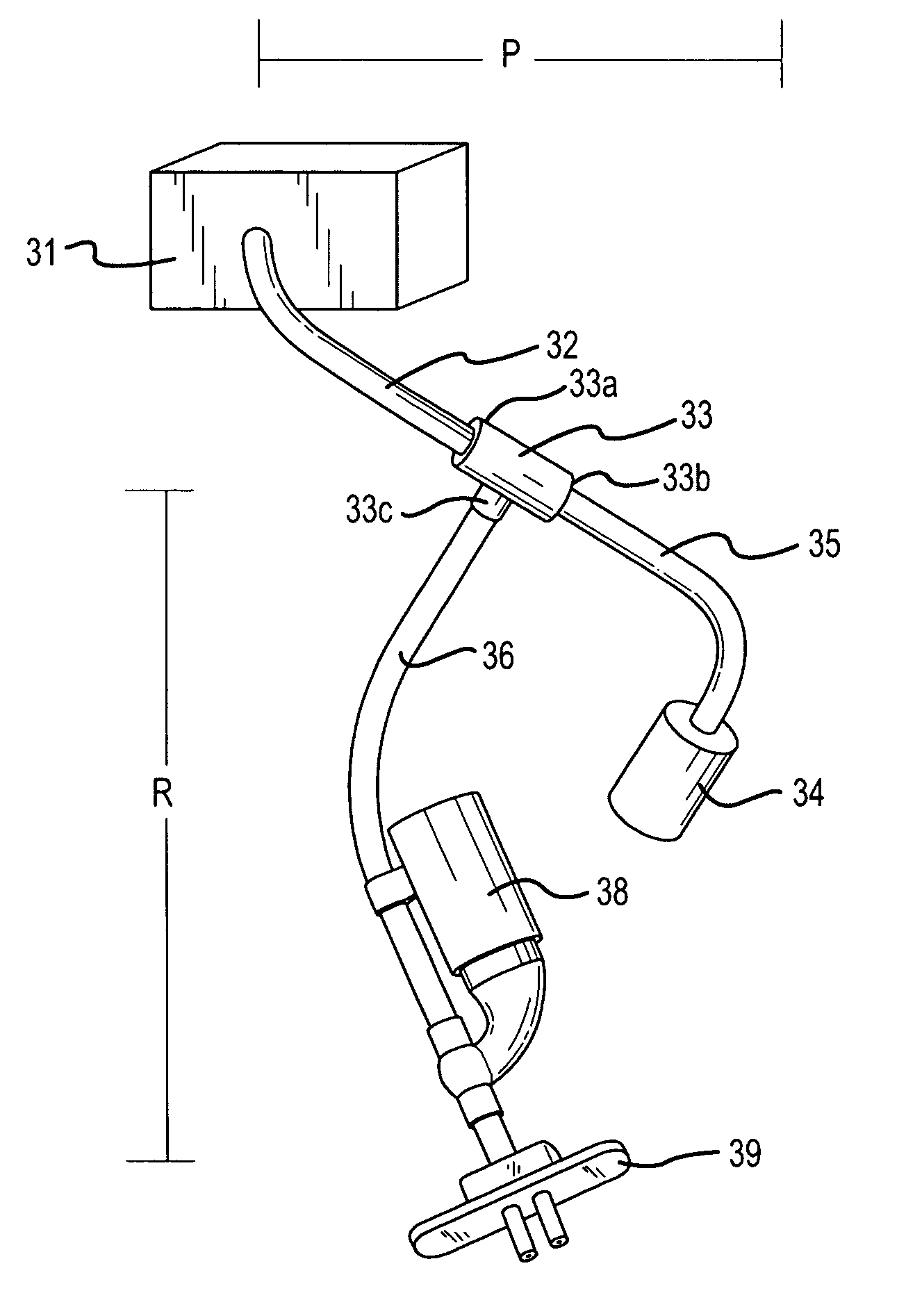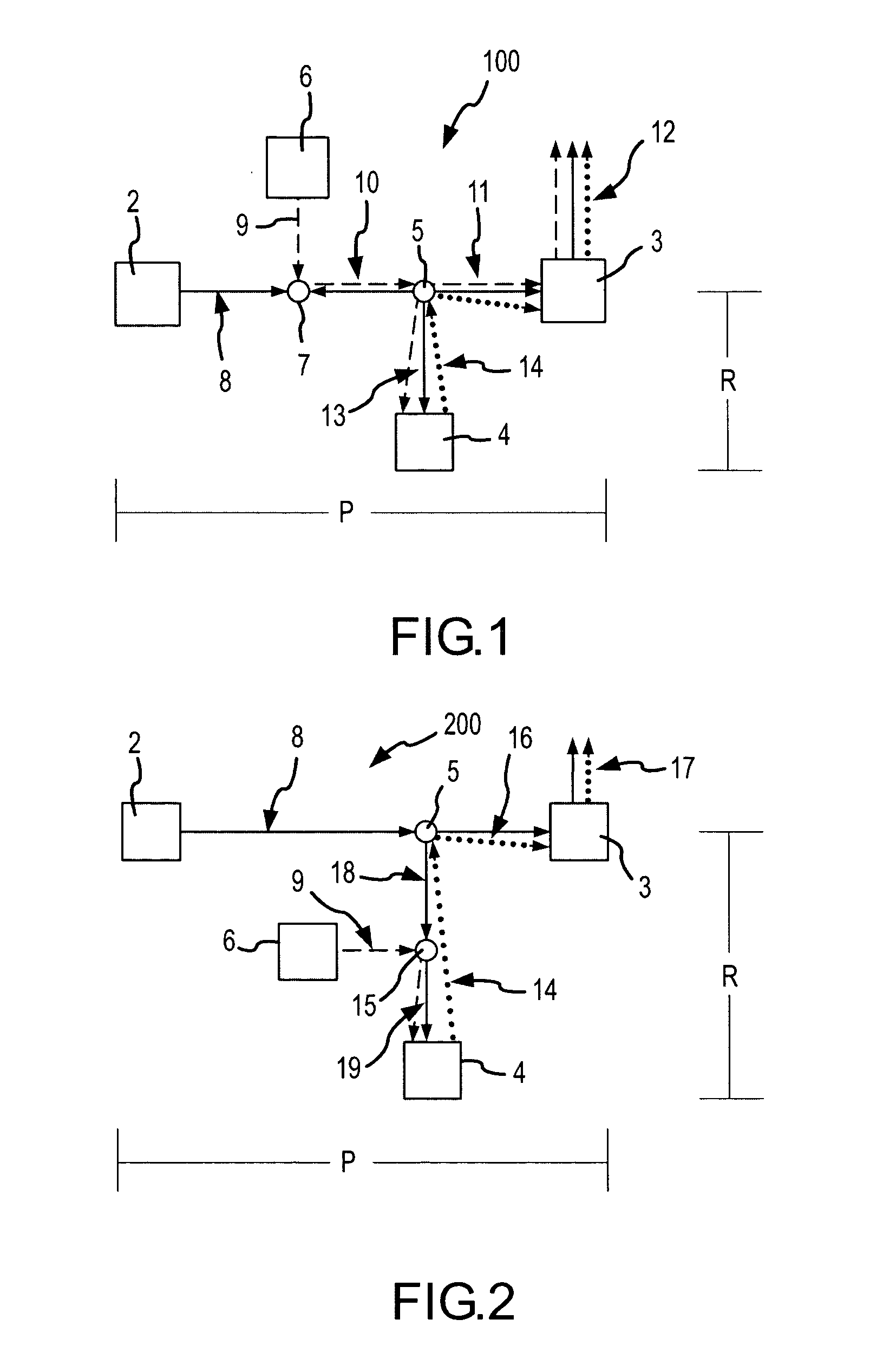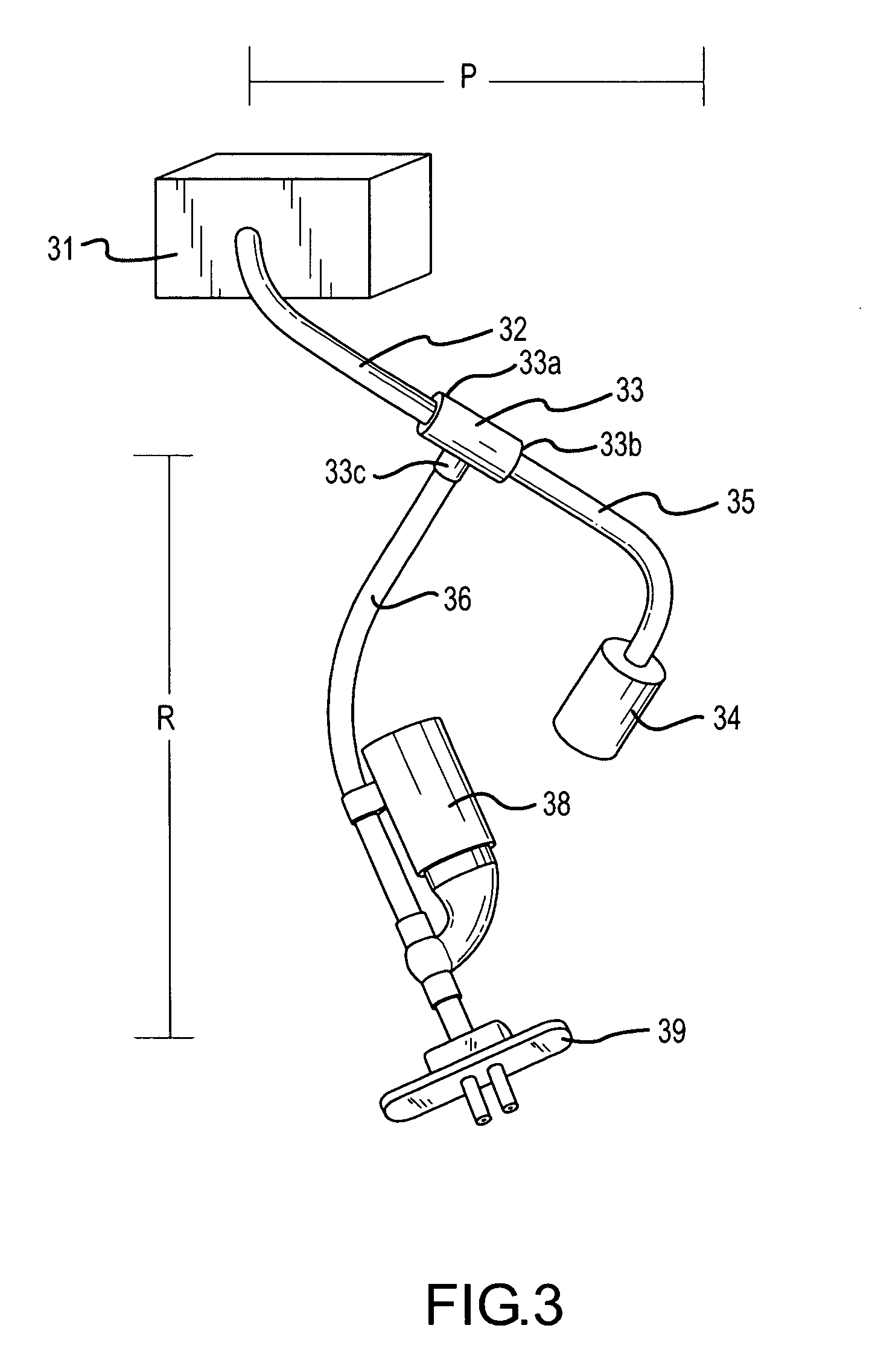[0007] In one embodiment of the invention, the pressure-generating circuit may comprise a conduit that couples a flow generator that produces a high volume flow of gas through the conduit with a pressure-regulating device that maintains the CPAP. The respiratory circuit provides a lower-volume positive pressure air flow from the pressure generating-circuit to the patient interface device for
inhalation by the patient. The respiratory circuit may comprise a conduit connected at one end to the pressure-generating circuit and at the other end to the patient interface device. In one particular embodiment, the respiratory circuit comprises a flexible tube having a small
diameter, e.g. an outside
diameter of 5 mm or less, connected at one end, e.g. through a “T” or “Y” shaped junction unit, to a larger flexible tube comprising the pressure-generating circuit, and at the other end to the patient interface device. This arrangement allows the patient to move his / her head freely without disconnecting the patient interface device from the patient. Alternatively, the respiratory circuit may comprise a gas conduit contained within the patient interface device itself.
[0008] The nebulizer is coupled to the respiratory circuit and is adapted to emit an aerosolized medicament directly into the portion of the total gas flow that is inhaled by the patient, preferably in the direct vicinity of the patient's
nose, mouth or artificial
airway, thereby eliminating the
dilution effect caused by introducing the aerosolized medicament into the high-volume gas flow of the pressure-generating circuit. Nebulizers suitable for the practice of the present invention generally comprise a reservoir for holding a liquid medicament to be delivered to a patient's
respiratory system, a vibrating aperture-type
aerosol generator for aerosolizing the liquid medicament and a connector for connecting nebulizer to the respiratory circuit. Particularly preferred nebulizers of the invention are small and light-weight, for example having a
net weight (without liquid) of 5 gms or less, preferably 3 gms or less, and have a connector adapted to attach to the weaker smaller
diameter tube making up the respiratory circuit. Such “miniature” nebulizers may have a small reservoir that holds one unit
dose of medicament, e.g. less than 4 ml of liquid, and a light-weight
aerosol generator, e.g. on the order of about 1 gm in weight. In addition, preferred nebulizers are quiet in operation, e.g. producing less than 5 decibels of
sound pressure, so that they can conveniently be placed very close to the patient.
[0010] The present invention provides a number of benefits. The nebulizer of the present invention is located outside the primary high flow pressure-generating circuit of the pressure-assisted
breathing system, thereby minimizing the
dilution effect that would occur if the aerosolized medicament is introduced into the total (much greater) flow of
gas passing through the primary pressure-generating circuit. In addition, because of its small size and quiet operation, the nebulizer may be located in very close proximity to the patient's
airway, thereby decreasing the distance which the medicament must travel and further increasing the efficiency of the system.
[0011] Due to the increased efficiency of the present invention, the reservoir of the nebulizer may be sized to accommodate a smaller amount of medicament. For example, the reservoir of the nebulizer may have a capacity equal to a single unit
dose of medicament, i.e. an amount sufficient for one treatment, and substantially all of the medicament may be delivered to the patient without the need to replenish the reservoir. This is particularly beneficial in respiratory therapies that utilize
phospholipid surfactants since these medicaments are scarce, expensive and, because of their high
viscosity, difficult to deliver. The present invention may also eliminate the need to pump medicament from an outside container to the nebulizer, although in some applications of the invention this may be desirable.
 Login to View More
Login to View More  Login to View More
Login to View More 


